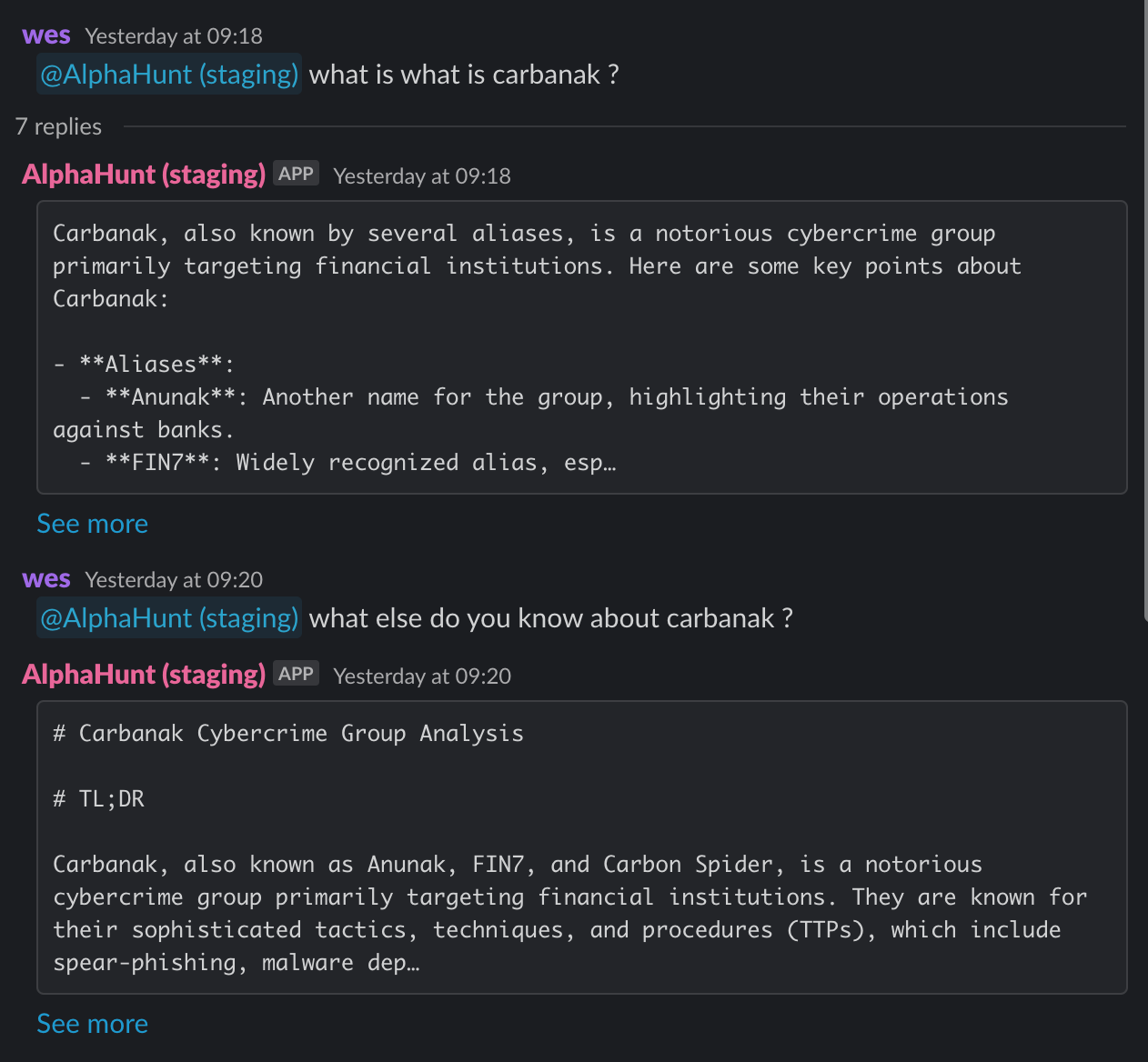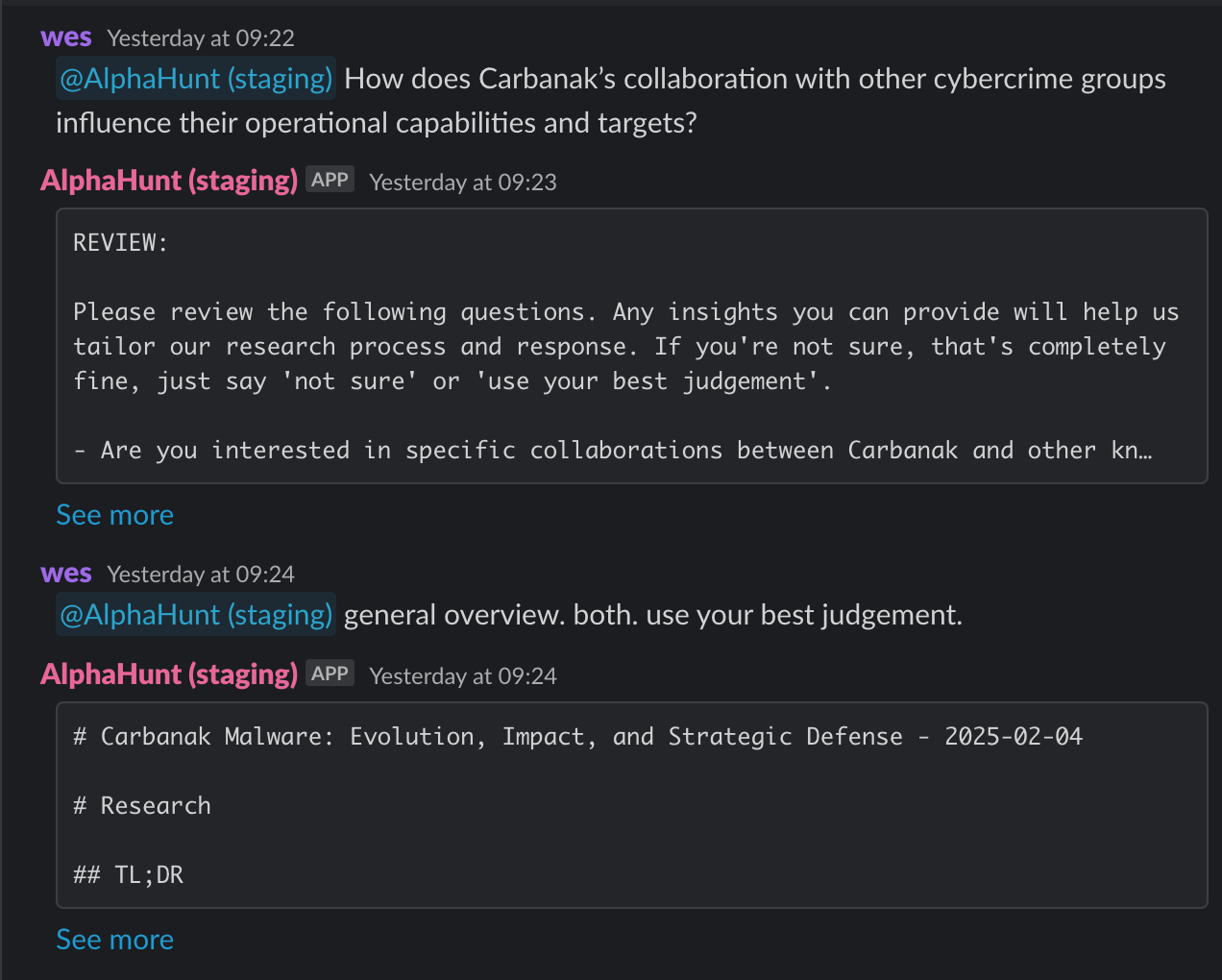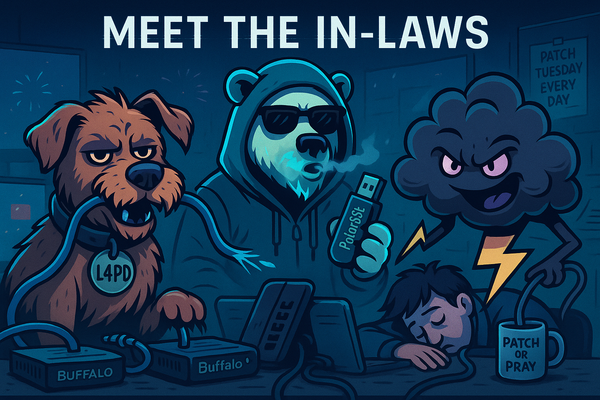Carbanak Malware: Evolution, Impact, and Strategic Defense
Carbanak emerged in 2013, attributed to the Eastern European cybercrime group known as the Carbanak Group or Anunak. This malware family primarily targets financial institutions, driven by the motivation of financial gain.



You think I'd know how to type by now.... Good think AlphaHunt understands your intent, not what you typed 😸
EDITOR'S NOTE: I'm testing the next generation of the AlphaHunt- the research goes a bit deeper, a bit more directed and a bit more "peer" reviewed. The layout may still need some work... feedback welcome (just hit reply! :))
Thanks for taking the time to subscribe and read these, if they bring you value, let me know!
Research
TL;DR
- Carbanak is a sophisticated malware family targeting financial institutions since 2013.
- Originating from Eastern Europe, the Carbanak Group has stolen millions through advanced tactics.
- The malware has evolved, now incorporating ransomware and targeting diverse sectors.
- Key recommendations include enhancing threat detection, email security, and access controls.
- Collaboration with industry and government partners is crucial for effective defense.
Summary
Origin and Motivation
Carbanak emerged in 2013, attributed to the Eastern European cybercrime group known as the Carbanak Group or Anunak. This malware family primarily targets financial institutions, driven by the motivation of financial gain. The group has successfully executed large-scale thefts by exploiting system vulnerabilities, using tactics such as spear-phishing and remote access tools to infiltrate banking networks.
Evolution and Impact
Over the years, Carbanak has marked a significant shift in cybercrime, demonstrating the potential for organized cybercriminals to execute substantial financial thefts. The group's operations have evolved, adapting to cybersecurity advancements and employing more sophisticated techniques. Notably, Carbanak has expanded its targeting beyond financial institutions to include sectors like healthcare and government, driven by the increasing value of sensitive data and potential for financial fraud.
Recommendations and Strategic Defense
To combat Carbanak, organizations should implement advanced threat detection systems, enhance email security, and strengthen access controls. Regular security audits and penetration testing are essential to identify and remediate vulnerabilities. Developing a comprehensive incident response plan tailored to Carbanak threats is crucial, alongside conducting regular tabletop exercises to test readiness. Collaboration with industry-specific information sharing and analysis centers (ISACs) and government agencies is vital for staying informed about the latest threats and mitigation strategies.
Future Outlook
In the short term, Carbanak is expected to continue leveraging ransomware tactics and expand its targeting to non-financial sectors. In the long term, the malware is likely to evolve further, incorporating advanced evasion techniques and AI-driven tools. Increased collaboration with other cybercrime groups, such as FIN7, is anticipated to enhance Carbanak's operational capabilities, leading to more complex and widespread attacks.
Attribution
Origin
Carbanak is a sophisticated malware family that originated around 2013, primarily targeting financial institutions. It is attributed to a cybercrime group known as "Carbanak Group" or "Anunak," believed to be based in Eastern Europe. The group gained notoriety for its advanced tactics, including spear-phishing and the use of remote access tools to infiltrate banking networks.
Motivation
The primary motivation behind Carbanak's operations is financial gain. The group has successfully stolen millions of dollars from banks and financial institutions by exploiting vulnerabilities in their systems. Their methods often involve stealing sensitive data and executing fraudulent transactions.
Historical Context
Carbanak's emergence marked a significant shift in cybercrime, as it demonstrated the potential for organized cybercriminals to execute large-scale financial thefts. The group's operations have evolved over the years, adapting to changes in cybersecurity measures and employing more sophisticated techniques.
Timeline
- 2013: Carbanak malware first identified.
- 2014-2015: The group conducts a series of high-profile attacks on banks, resulting in significant financial losses.
- 2017: Law enforcement agencies begin to take action against the group, leading to arrests and disruptions in their operations.
- 2020: Carbanak resurfaces with new variants and tactics, including ransomware attacks.
Countries Targeted
- United States - The primary target for Carbanak, with numerous attacks on financial institutions leading to substantial losses.
- United Kingdom - Significant targeting of banks and financial services, with several reported breaches.
- Russia - Targeted for both financial theft and espionage, leveraging local vulnerabilities.
- Canada - Notable incidents involving Canadian banks, indicating a broader North American focus.
- Australia - Less frequently targeted but still a victim of Carbanak's operations.
Sectors Targeted
- Financial Services - The most targeted sector, with banks and financial institutions suffering major breaches.
- Retail - Targeted for payment data theft, particularly during peak shopping seasons.
- Healthcare - Increasingly targeted for sensitive data and financial fraud.
- Government - Some attacks aimed at government financial systems.
- Education - Targeted for research funding and sensitive data theft.
Links to Malware/Groups
Carbanak has been linked to various other malware/groups, including:
- FIN7 - Shares similar tactics and targets (overlap?).
- Dridex - Often used in conjunction with Carbanak for credential theft.
- Emotet - Used for initial access and distribution of Carbanak payloads.
Similar Malware
Similar malware to Carbanak includes:
- GozNym - Combines banking Trojan capabilities with data theft.
- TrickBot - Known for its modularity and ability to deliver various payloads, including ransomware.
- Zeus - A classic banking Trojan that shares operational similarities with Carbanak.
Threat Actors
The primary threat actor associated with Carbanak is the Carbanak Group, which is believed to consist of highly skilled cybercriminals with backgrounds in IT and programming. They are known for their organized approach to cybercrime, often collaborating with other groups to enhance their capabilities.
Breaches Involving This Malware
Carbanak has been involved in numerous high-profile breaches, including:
- The theft of $1 billion from over 100 banks worldwide.
- Attacks on the Central Bank of Bangladesh, resulting in an $81 million theft.
- Multiple incidents involving financial institutions in the U.S. and Europe.
Recommendations, Actions, Suggested Pivots, Forecasts and Next Steps..
(Subscribers Only)





